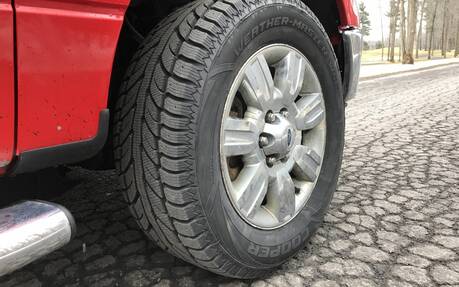How to Check If Your Tires Are in Good Condition
Every spring during tire season we all end up asking ourselves the same question: are my tires still good for another season?
Tire life depends on a variety of factors; your driving habits and the tire’s brand and quality. Because of these variables, it’s difficult to base this on a number of seasons or mileage. With these factors in mind, it is recommended to check your tires visually.
- Also: Best All-Season Tires For Cars
- Also: Michelin Plans to Make Tires From Recycled Plastic Bottles
The first thing to check would be the thickness of the tire tread. This can easily be done using a tire tread gauge, commonly found at most tire shops or automotive part stores.
To legal on the road, your remaining tire tread must be at or above 1.6 mm (2/32"). That being said, the Société de l’Assurance Automobile du Québec (SAAQ) stipulates that a tire with a tread measurement below 4.8 mm (6/32") starts to lose traction in certain situations. If the tires you are planning to install are at or near that measurement, it may be wiser and safer to invest in a new set of tires right away.
As tire wear can often be uneven due to factors such as poor alignment, overinflation, underinflation, and others, it is very important to check the tread of condition of every tire. Some tire shops may even refuse to install tires that show signs of uneven wear, as they can pose a safety risk.
How old are your tires?
While tread life is one thing to worry about, tires can also lose effectiveness based on their age. As they get older, the rubber compound can dry up, and no longer provide the same grip that is necessary to keep you and your occupants safe on the road. Regarding this matter, the SAAQ states that “tires older than five years start to lose their qualities.”
Thankfully, it is quite easy to tell the age of your tires. To find out, locate the DOT code on your sidewall. The DOT code is what tire manufacturers use to determine the date of production of their tires.
The first two numbers of the code indicate the week of production, while the final two determine which year they were manufactured in. For example, a DOT code of 1316 would indicate that a tire was manufactured on the 16th week of 2016.
